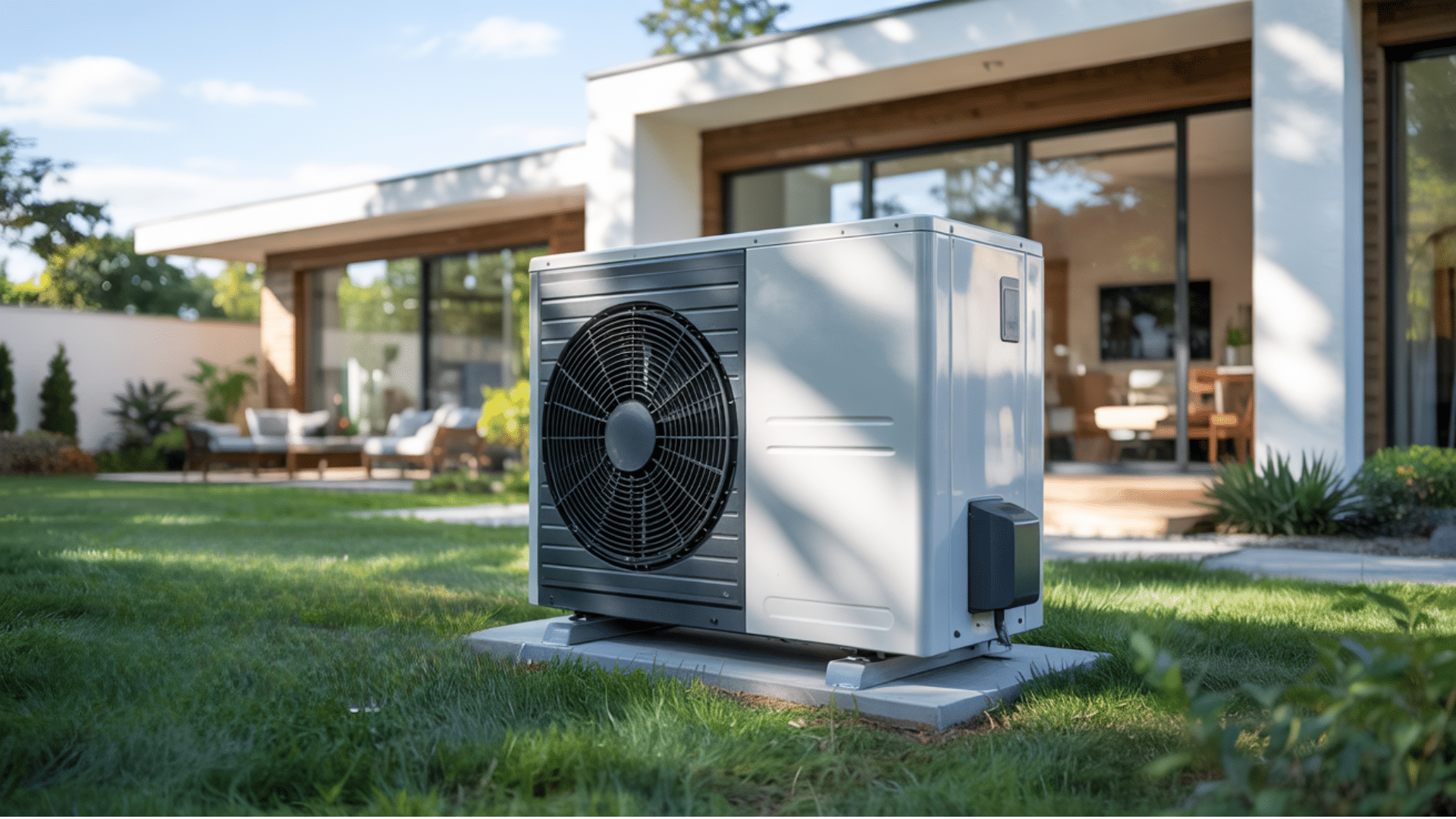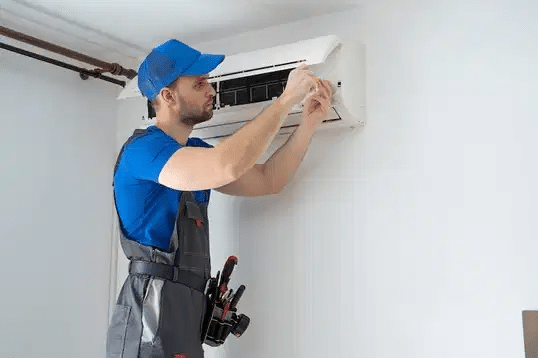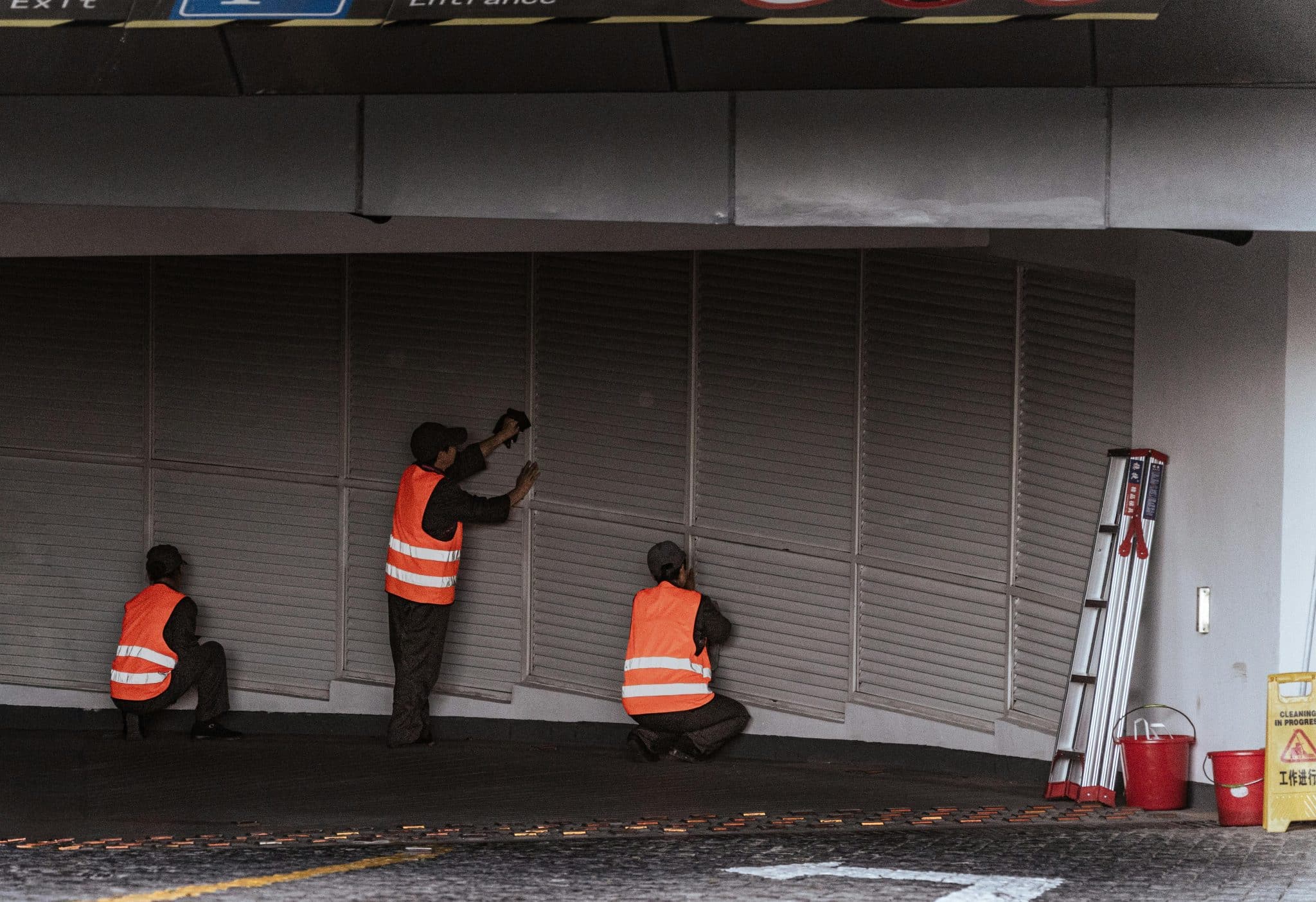I’ve noticed many homeowners asking about heat pumps lately. Their growing interest makes sense. These systems offer a new take on home comfort that deserves attention.
Unlike standard heating and cooling setups, heat pumps work as both winter warmers and summer coolers in one unit.
Their rise in use comes from three main facts: they need less energy than other options, they come with money back from government programs, and they help keep our world cleaner.
In this blog, I’ll show you the good and not-so-good sides of heat pumps to help you decide if they might work for your home. By the end, you’ll have a clear picture of what makes these systems useful for many houses.
What is a Heat Pump?
Heat pumps are systems that move heat between indoor and outdoor spaces. Unlike standard furnaces that create heat, heat pumps transfer existing heat from one place to another.
The basic concept works like this: during cold weather, a heat pump pulls warmth from the outside air (even cold air contains some heat) and moves it inside your home. In warm weather, it does the opposite – removes heat from inside your house and pushes it outdoors, cooling your space.
This transfer happens through a cycle of evaporation and condensation of refrigerant that circulates through the system. The process includes components like the compressor, condenser, expansion valve, and evaporator coils.
Heat pumps come in different types, with air-source and ground-source (geothermal) being the most common. They’re known for working as both heating and cooling solutions in a single system.
The Science Behind Heat Pumps
Heat pumps work on a simple but smart idea. They move heat rather than make it. This transfer happens through a cycle that shifts heat from outdoors to indoors when it’s cold and from indoors to outdoors when it’s hot.
The main parts of a heat pump include the compressor, condenser, expansion valve, and evaporator. These parts work together to move refrigerant through the system. As the refrigerant flows, it picks up heat from one area and drops it off in another.
How do Modern Systems Handle Cold Weather?
Older heat pumps had trouble in very cold places. They couldn’t find enough heat to move when outdoor temperatures fell below freezing. But today’s systems can work well even when it’s quite cold outside.
New models use better compressors and smarter controls. They can now extract heat from air as cold as 5°F. Many also come with backup heating for the few days when it gets too cold for the heat pump to work alone.
Types of Heat Pumps
When looking at heat pump options, you’ll mainly find two types: air-source and ground-source systems. Each has its own set of traits that might make it right for your home.
Air-Source vs. Ground-Source Heat Pumps
| Feature | Air-Source Heat Pump | Ground-Source Heat Pump (Geothermal) |
|---|---|---|
| Cost | Lower first cost | Higher first cost due to work needed |
| Energy Savings | Works well in mild weather | Better savings due to steady earth temp |
| Setting Up | Easier, needs less space | Needs more space and digging |
| How Long It Lasts | 10-15 years | 20+ years |
| Works Best For | Mild weather areas | Very hot or cold places |
Air-source heat pumps pull heat from the air around them. They cost less to buy and set up. Most homes can fit them with no big changes to the yard or home.
Ground-source (or geothermal) systems use pipes buried in your yard. These pipes tap into the constant temp below ground. While they cost more to put in, they save more money each month and last much longer.
Your choice depends on your budget, yard size, local weather, and how long you plan to stay in your home.
Pros of Heat Pumps
1. Energy Efficiency
Heat pumps stand out for their high energy output compared to input. They can be up to 300% more efficient than old heating systems. This means that for every unit of electricity used, they provide three units of heat.
This high efficiency leads to smaller monthly power bills. Most homes see their energy use drop right away after switching.
Heat pumps also cut down the need for gas, oil, or coal. This makes them a good choice for people who want to use less fossil fuel.
2. Cost Savings
The savings from a heat pump can add up fast. Most homes save between $370 and $1,000 each year, based on what system they had before.
The up-front cost gets smaller, thanks to federal tax credits. Many states and power companies also offer cash back. These programs can take thousands off the total cost.
3. Dual Functionality
One big plus of heat pumps is that they both heat and cool your home. This means you don’t need to buy, fix, or run two different systems.
Having just one system saves space, cuts down on repair bills, and makes home comfort simpler.
Heat pumps also keep temps more steady. This leads to fewer hot or cold spots and better comfort all year long.
4. Improved Air Quality
Heat pumps make for better air inside your home. They don’t burn fuel like gas or oil systems, so they don’t make smoke, fumes, or other bad stuff.
This lack of burning means no risk of carbon monoxide, which can be deadly. It also means less dust and fewer tiny bits in the air that can hurt your lungs.
5. Environmental Impact
Heat pumps help cut down the gases that warm our planet. They use less power and don’t burn fuels directly.
When you pair a heat pump with solar panels or other clean power, you can make your home’s effect on the world even smaller.
Cons of Heat Pumps
1. Cold-Weather Limitations
Heat pumps don’t work as well when it gets very cold. Below 40°F, they have to work harder to find heat to move indoors.
In very cold places, you might need a backup system for the coldest days. This could be a gas furnace or electric heaters that kick in when needed.
2. Initial Cost and Installation Challenges
The big downside for many is the first cost. A full heat pump system costs about $16,000 on average. Ground-source systems cost even more due to all the digging.
Putting in a heat pump can be tricky too. You need enough space outside for the unit. Some homes need new duct work or electrical updates to make it all work.
3. Noise and Maintenance
Heat pumps can make noise. The outdoor unit has fans and a compressor that you might hear when it runs.
Newer models are much quieter than old ones, but some noise is still there. Where you put the outdoor unit matters a lot for noise control.
While heat pumps need less care than some systems, they still need check-ups. You should clean filters often and have a pro look at it once a year.
How to Maintain a Heat Pump?
Keeping your heat pump in good shape doesn’t have to be complicated. Here are four key maintenance tasks to focus on:
Regular Filter Cleaning
Change or clean your air filters every 1-3 months. This simple task helps your system run better and use less power. Dirty filters make your heat pump work harder and cost you more money on your energy bills.
Outdoor Unit Care
Keep the outdoor unit free of leaves, dirt, grass clippings, and other stuff. Make sure plants stay at least 2 feet away from all sides. Good air flow around this unit is key to how well your system works.
Annual Professional Check-ups
Have a trained tech look at your system once a year. They’ll check refrigerant levels, clean coils, test parts, and spot small issues before they turn into big problems. The best time for this check is right before the heating or cooling season.
Watch for Warning Signs
Pay attention to strange noises, weak air flow, or higher power bills. These can point to a problem that needs fixing. Quick action on these warning signs can save money and extend the life of your system.
Common Misconceptions About Heat Pumps
Many people have the wrong ideas about heat pumps that might stop them from trying this home comfort option. Let’s clear up four common myths:
Heat Pumps Don’t Work in Cold Weather
Many folks think heat pumps fail when temps drop. While older models did struggle in the cold, today’s heat pumps work well even when it’s 5°F outside. Modern tech has fixed this old problem. Some units now heat homes in places with very harsh winters, though they might need backup help on the coldest days.
Heat Pumps Use Too Much Electricity
Some worry that heat pumps will make power bills shoot up. The truth is that heat pumps use far less energy than other electric heating. For each unit of power they use, they make 3-4 units of heat. This high output makes them much cheaper to run than basic electric heaters.
They Cost Too Much to Install
The first cost of a heat pump can seem high. But when you count tax breaks, cash-back offers, and years of lower bills, the total cost often beats other options. Many people find that their system pays for itself in 5-10 years through saved energy costs.
Are Heat Pumps Worth It?
Based on all the pros and cons, heat pumps offer clear value for many homes. They shine in mild climates, save money over time, and help the planet.
However, they may not fit homes in very cold areas without backup systems or those with limited outdoor space. The high first cost also means you need to stay put long enough to see the full benefit.
Conclusion
Now you know the facts about heat pumps – both good and not-so-good. For many homes, these systems offer a smart path to better comfort with lower bills over time.
Your choice should match your local weather, home setup, and how long you’ll stay there. Talk with a trusted HVAC pro who can check your specific needs.
Remember that what works for your neighbor might not work for you. The right heating system fits your unique home and budget goals.
When looking at the big picture, heat pumps stand out for their dual function and energy savings. With tax breaks and utility perks, the cost gap is closing fast. Your next step is to get a home check to see if a heat pump fits your needs.
Frequently Asked Questions (FAQs)
At What Temperature Is a Heat Pump Useless?
Most heat pumps work at full strength until outdoor temps hit 40°F. Below this, they start to lose power. When temps fall to 20-30°F, most units become much less useful at heating your home without help.
What Is the Payback Period for A Heat Pump?
You can expect to get back your money in about 5 to 10 years. This time changes based on energy costs, how much you paid to put it in, and how much heat your home needs.
How Much Should I Expect to Pay for A Heat Pump?
Heat pump costs run from $6,000 to $25,000. The price depends on where you live, who puts it in, how big it is, how well it saves energy, and local permit fees.










